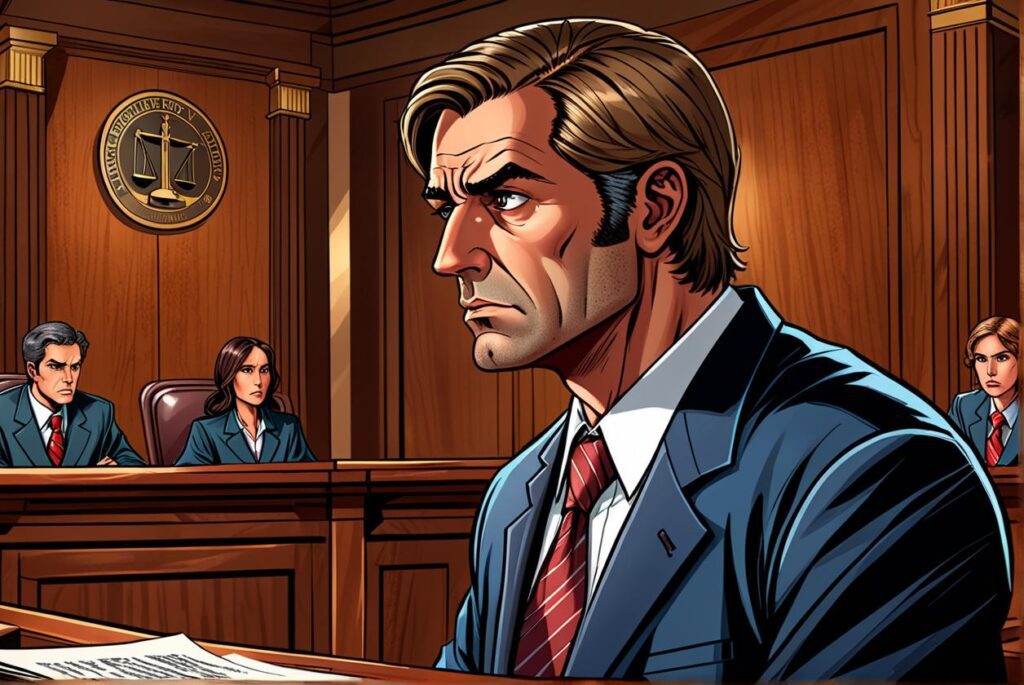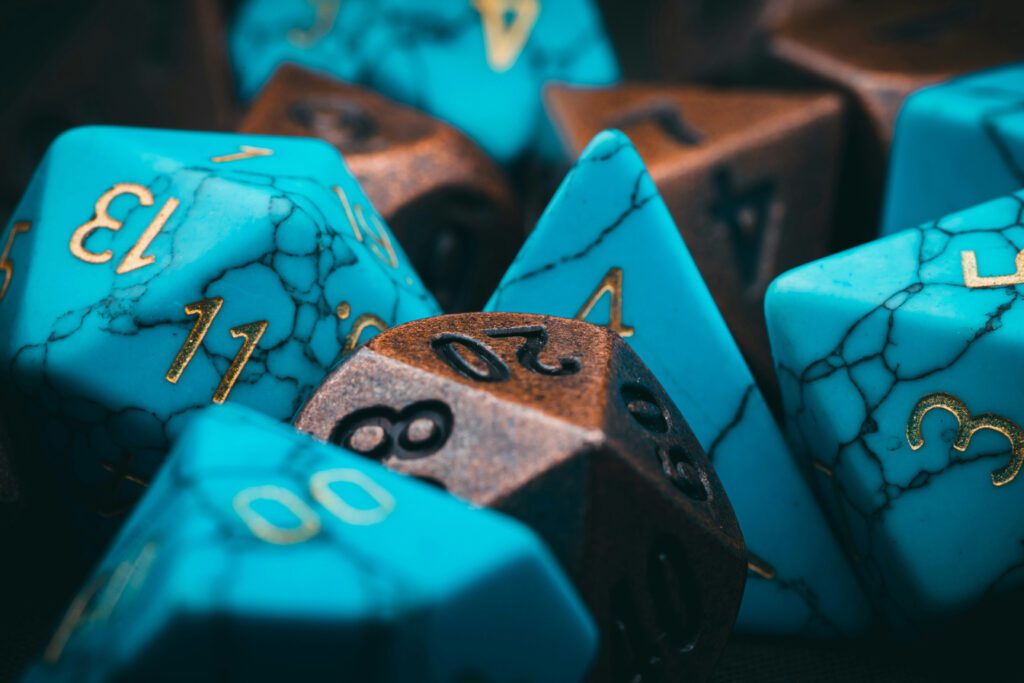5 Tips on Writing: With Tim Schuchert
Tim is a Narrative Designer with multiple years of experience within the German Games Industry. After studying Media Informatics and Interactive Entertainment, which included an internship at KING Art GmbH, where he worked on the award winning RTS game “Iron Harvest”, he became a Product Designer at Articy Software GmbH, working on the next generation of Narrative Design tools.
From there he transitioned into AAA game development and is currently working as Technical Narrative Designer at Crytek, where he brings the next title of the Crysis franchise to life.
Furthermore, he has been involved in several other projects related to Narrative Design. He has been the creator of interactive audio books, games, interactive streaming events, short stories, poems, pen and paper adventures and a workshop host teaching narrative design and writing.
Having a huge passion for pen and paper role playing games, Tim is also hosting and mastering a German speaking actual play show on Twitch.

Hooking Your Audience
Open with a scene that is captivating and interesting, making your audience guess what will happen next and creating an intrinsic motivation for them to learn more about your world and the story that unfolds within.
It helps to know the tropes and best practices of the genre you are writing for, so you may stick to them or maybe even subvert them with the first twist of your story. Give your audience something they are looking for.
For this purpose it helps to find the exciting and special in the mundane. A luxurious cruise is suddenly assaulted by armed men stealing valuable goods, a happy wedding turns dramatic when the bride is kidnapped, a test of courage among teenagers goes horribly wrong as one of them isn’t returning from a night in the spooky fields – you get the idea.
Take your audience by the hand and gently guide them into your world. Make sure they get an understanding of the conflict and the stakes, without giving everything away. Once they are hooked you’ll have plenty of time to introduce your profound worldbuilding, badass antagonists and world ending rituals.
Mastering Plot Development
Find a process for developing your plot that fits you and the project environment you are working in. Within the games industry all story arcs are usually pre-planned as other departments are depending on your input.
When writing a book or audiobook on your own you have the freedom to be more of a pantser and see where the characters take you as you write your story.
In any case, I find it helpful to separate stories into parts to which I can assign an emotion and dramatic intensity. A game is separated into levels and levels are separated into beats, whereas books are separated into acts, chapters, paragraphs and so on.
Along these moments in a story you can trace a journey, which can be compared to your character arcs and the expected standards of the genre you are writing for. Viewing your story through the plot lens lets you uncover structural issues you might want to fix before starting to work on details.

Effective World-Building Strategies
Always keep in mind that you don’t want to write a lexicon. You want to write a story, as this is what your audience will be experiencing.
While it is fun to design a world with all of its geography, politics, history, art, languages and whatever else seems interesting, its not necessary to go into too much detail most of the time.
Rather define things that you’ll be actually able to show to your audience. Nobody wants to listen to the king’s advisor monologuing about the distant orc lands, if we never get to see them or meet characters from there. Really think about how the audience will passively absorb these details you created, by living and observing your world.
Especially when writing for games you want your worldbuilding to be adaptable to changes and needs from other teams, while at the same time being able to communicate important details to them.
- Why is it so special that the player character can use magic in this world?
- Why is the player character revived at a holy site each time they die?
- Why does the player character follow the instructions of an ominous voice they have only ever heard on the radio?
- The answer? Worldbuilding!
In any case, stick to the rules you establish for yourself to avoid narrative inconsistency.

Techniques for Character Development
Conflict is the engine for good character development. Give your characters wants and needs that aren’t easy to achieve.
Explore from where in the character’s backstory these desires originate and where they will lead the character as they progress through the story.
- How will they overcome the challenges that are presented to them?
- Are they in conflict with other characters, the world or themselves?
- Will they need to change themselves or can they change the world around them to achieve their goal?
- Are their actions going against their own moral compass or the ethics of the world?
- What will other characters think of their actions?
- How is the character’s journey progressing compared to the beats of the plot?
And don’t only do this for your main character, but for all characters in your (main) cast.
Crafting Meaningful Decisions
Meaningful choices originate from following the other best practices presented in this article.
Only an audience that is invested into your world, story and characters, will find a choice meaningful. They have to understand your worldbuilding and the stakes of the decision turning it into a pivotal beat in your story.
Making the choice should put your character and by that the audience into a moral dilemma, as there is no clear right or wrong in terms of narrative or mechanical advantages.
Meaningful choices enable your audience to fulfill their fantasy within your story. Consider, if you want to make your choices more about how characters are doing something or about what they are doing.
Lastly, creating multiple choice options for your audience to explore, demands more work from you, if you don’t want to make them feel fake. Therefore, keep the scope of your project in mind. Not all stories need to be branching.

Tim's Work & Experience
Games:
- Crysis 4 (not yet released)
- Iron Harvest
- Various game jam and student projects
Interactive audio books:
Misc:
- Various short stories, poems and tabletop RPG adventures
Writing & Narrative Design Skills
I have the advantage of having a very holistic view on stories, thanks to my various experiences. I easily communicate with artists, programmers and designers, to learn about their needs and limitations, while being able to advocate for the narrative vision of the team.
At the same time I’m able to work within game engines, script and implement interactive content and create new narrative systems.
Exploring Favorites
There are too many good stories out there to just name one.
Read, watch, play and listen with care and attention and learn from each experience.
Don’t be afraid to try something new to broaden your horizon. As writers and narrative designers we have to stay curious and willing to learn something new each day.
Register for our Free Writing Workshop now!
If you are interested in creating your own interactive audio story, you can apply for our free webinar! It will introduce you to our interactive story game engine, TWIST, and teach you how to use it to create interactive audio stories.
Interested in contributing to our blog series?
If you would also like to publish a blog post on our website and share your own story with interested readers, simply fill out the contact form.





